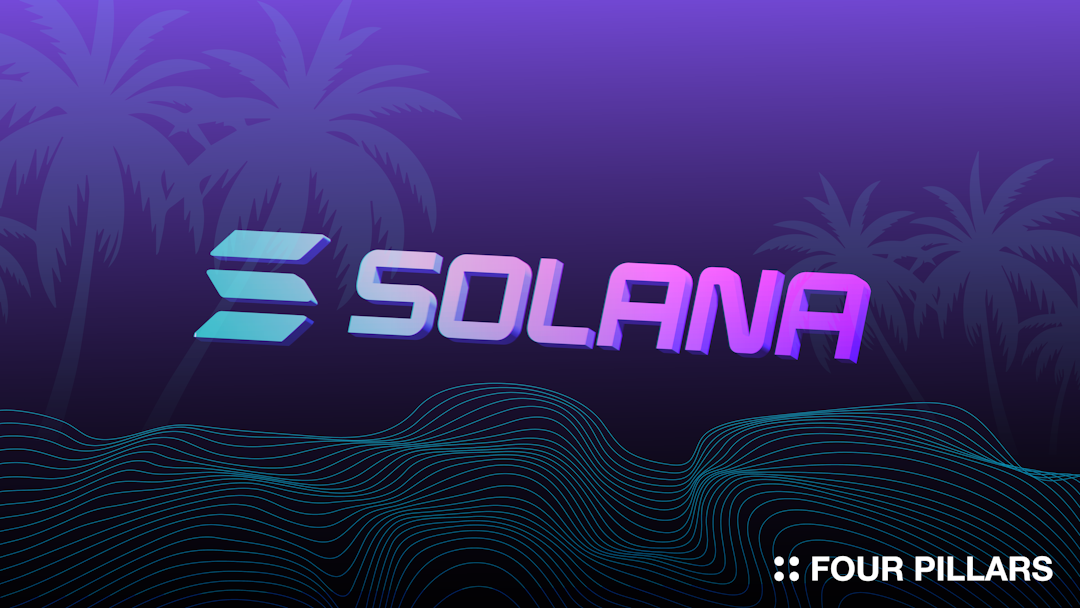
Sei: How does it ensure peak performance even in the most challenging scenarios?
Key Takeaways
Following the Terra and FTX incidents, the blockchain industry has undergone a market reformation centered around Ethereum and rollup networks.
Amidst this market situation, Sei Network claims a fast monolithic Layer 1 chain.
Ultimately, for a blockchain to succeed, it needs to be easily onboarded by a large number of users, requiring scalability and chain stability.
The Sei Network has developed the Twin Turbo Consensus to achieve the fastest finality in the world while being stable.
Now, with the mainnet launch just around the corner, there is keen interest in seeing the performance that the Sei Network can deliver.
1. Latest Trend in Blockchain Industry, but Sei.
The mainnet for SEI Network, set to become one of the fastest blockchains in the world and a leading example of monolithic blockchain, is right around the corner. SEI Network, whose mainnet schedule has been delayed until now, announced on August 1, 2023, that it would open a launch pool for the SEI Network on Binance, the world's largest exchange. Furthermore, Binance revealed on August 15th that it would list SEI, the token of the SEI Network, officially confirming that the mainnet launch of the SEI Network is not far off. As the mainnet launch of the SEI Network approaches, let's take a brief look at the SEI Network that was previously covered by Four Pillars, and understand the philosophy of the SEI Network and the recent accomplishments of the network.
1.1 The Era of Rollups
Following the Terra and FTX incidents, the blockchain industry has undergone a market reformation centered around Ethereum and rollup networks. As Terra and Solana, which positioned themselves as Ethereum competitors, have either collapsed or severely faltered, the sentiment that "there's no longer a need for new Layer 1 blockchains" has become the dominant opinion. This market situation has only further strengthened the already robust Ethereum ecosystem, and with more power being funneled into the rollup-centric multi-chain ecosystem adopted by Ethereum, the period from 2022 to 2023 can rightly be called the "Era of Rollups". During this time, rollup chains, Layer 2 solutions, and several modular blockchains have received significant attention. Below are a few representative projects among the numerous rollups:
1.1.1 Optimism and OP Stack
The OP Stack received significant attention when it was revealed that Coinbase, one of the largest exchanges in the world along with Binance, had implemented its next blockchain, the BASE Chain, through OP Stack. OP Stack is an open-source code that provides the ability to build Optimistic Rollups. By using it, rollup chains can be very easily created. It can be seen as a kind of Software Development Kit (SDK) for Optimistic Rollups. Recently, Worldcoin, co-founded by Sam Altman who is known as the father of Chat GPT, also launched on the Optimism mainnet, indicating their support for OP Stack's multi-chain vision. As these two renowned companies, Coinbase and Worldcoin, actively utilize Optimism and OP Stack, the demand for constructing Optimistic Rollup chains with OP Stack continues to grow. (For more details, please read Xpara's OP-Stack article).
1.1.2 ZK Sync and ZK Stack
While Optimism is a rollup that builds Optimistic Rollups, which validate transactions through fraud proofs, ZK Sync builds ZK Rollups, which validate transactions through validity proofs. Even though they are both rollups, there is a clear difference in their methodologies. Currently, as a result of its technical advancements over a long period of time, ZK Sync has not only become the third largest Layer 2 rollup in the Ethereum ecosystem but also announced ZK Stack, similar to Optimism's OP Stack, in June 2023, thereby entering the SDK war. Of course, there haven't been notable use cases yet, since it isn’t launched yet. However, the fact that there is now another alternative to OP Stack for those looking to build rollups indicates how intense the rollup market could become in the future. (For more details, please read Xpara's ZK-sync article).
Aside from these two projects, the blockchain market was filled with discussions about rollups, Layer 2, and modular blockchains as various infrastructures, such as RaaS (Rollup as a Service), were developed to simplify the creation of rollups.So, is building Layer 2 now the definitive solution, and has attempting to create a new Layer 1 become a meaningless endeavor? It seems like at least the SEI Network might not think so.
1.2 SEI's Counter-Betting, Monolithic L1 chain: Why Didn't They Choose Layer 2?

(Jay(Co-founder of Sei)’s perspective on Rollups and L2 | Source: Jay)
In any industry, when a particular technology gains attention, there is inevitably a concentration of talent towards that technology. However, it is also necessary to think critically before blindly accepting these technologies. Jay's opinion that constructing rollups is not an immediate solution to the problems currently faced by blockchain technology is a statement worth contemplating by those working in the industry. Perhaps, in some ways, rollups might be a term abused to cunningly deceive those who are repulsed by the term 'Layer 1 blockchain'.
Of course, rollups and Layer 1 blockchains are not exactly the same in all aspects. But depending on the types of applications and assets being built, Layer 1 and rollups might have similar attributes. Sicne all assets issued on Optimistic rollups are not protected by Ethereum, if the measure of chain’s success is "many users should be able to use it without inconvenience," building Layer 1 appears as valuable as building rollups from the perspective of the SEI Network.
It's said that Sei Labs initially considered building the Sei Network as a Layer 2 on Ethereum. However, they opted for Layer 1 due to the clear limitations in scalability and the issue of a single sequencer inherent in Layer 2 rollups.
Wait a minute, an issue with scalability? Weren't rollups introduced as a solution to the inherent scalability problems Ethereum faced?
While proponents of modular blockchains saw rollups as a solution to scalability issues, from Sei Labs' perspective, rollups remained an ambiguous alternative. After all, rollups still need to record processed data onto Ethereum's blocks. And since Ethereum blocks don't have infinite space, there's a clear upper limit to the number of transactions they can handle.
1.2.1 Let's calculate the maximum TPS (Transactions Per Second) that a rollup can handle.
The target size for an Ethereum block is approximately 15 million gas. To validate 1 byte of data in Ethereum, 16 gas is required. This means that Ethereum verifies and processes roughly 937,500 bytes of data (15,000,000/16) per block. If we assume a very 'simple' rollup transaction uses 12 bytes when batched for submission to Ethereum (this number varies by rollup and by transaction type, but this estimate is based on Vitalik's calculation for an ETH Transfer executed within a rollup), then the number of rollup transactions an Ethereum block can handle is 78,125 (937,500/12). Given that Ethereum's block time is around 13-15 seconds, dividing 78,125 by 13-15 seconds results in a maximum of 6,000 TPS and a minimum of 5,208 TPS. However, this calculation assumes that Ethereum's block space is used exclusively for rollups. Let's not forget that the Ethereum blockchain can also operate as a monolithic blockchain in its own right. Applications like Uniswap and Opensea are currently operating on the Ethereum base layer. This means that rollups are also in competition with Ethereum native apps for block space. Therefore, it's highly likely that the upper limit for TPS that rollups can achieve is less than 5,000. Even with the introduction of Proto Dank Sharding, the TPS upper limit wouldn't dramatically increase. While Dank Sharding might offer a significant increase, its implementation would take considerable time.
For these reasons, Sei chose to build a Layer 1 solution with its own consensus mechanism and block time, rather than relying on rollups(and ETH or Celestia). Of course, for many users to use it seamlessly, the network must be exceptionally fast while still ensuring the security inherent in a blockchain. So, how exactly did Sei construct its network, and just how fast is it?
2. Sei Network in a nutshell

The SEI Network is often viewed as a Layer 1 blockchain that specializes in trading, but it is actually a General Purpose Blockchain. While SEI has its own "order matching engine," it is more accurate to describe the SEI Network as a General Purpose Blockchain with enhanced trading infrastructure. This is because trading assets is considered one of the fundamental features of blockchain technology. Moreover, in addition to its internally enhanced trading infrastructure, SEI boasts an impressive speed that surpasses many other blockchains in terms of ‘time to finality’. Therefore, it is more significant to examine the consensus mechanism that SEI uses to achieve this speed.
2.1 Twin-Turbo Consensus: what makes Sei fast?
Twin Turbo Consensus can be understood as a consensus mechanism equipped with two turbos, which are the Intelligent Block Propagation and Optimistic Block Processing that SEI Network emphasizes. What roles do these play and how do they increase SEI's speed?
2.1.1 Intelligent Block Propagation

In traditional blockchains, block propagation involves two steps:
When a user initiates a transaction, the node receives and verifies the transaction, adds it to its mempool, and propagates this transaction to other nodes.
The verified transaction is included in a block by the leader (a mining node in PoW, a block proposer in BFT). This block is then propagated across the entire network. Only when all nodes receive this block can the transaction be considered successfully processed.
However, this traditional method is inefficient because the same transactions are transmitted twice: first during transaction propagation and then again during block propagation. This results in a waste of network bandwidth.
To address this problem, the SEI Network introduces a mechanism where the block proposer propagates a proposal containing the hash values of the transactions and a Block ID that references the complete block, rather than the actual transaction data. A hash value is a summary of the original transaction data processed through a hash function, which is smaller in size. The block proposer first propagates the block proposal to the network and then gradually propagates the complete block in parts.
Through this efficient propagation process, nodes can reconstruct their local mempools to form the block without having to wait for the complete block to arrive if they verify that they hold the transactions corresponding to the hash values. If any transactions are missing, they wait until the entire block arrives to process the transaction.
SEI has successfully improved network performance by about 40% using this block propagation process. (Additionally, SEI has reduced finality to 210ms through Intelligent Block Propagation, as mentioned later.)
2.1.2 Optimistic Block Processing


(Traditional block processing (above) versus SEI's block processing (below))
Before SEI's Optimistic Processing, consensus on the block had to be established before the block could be processed. However, SEI starts processing as soon as it receives a block, handling both Prevote and Precommit simultaneously. This structure might seem potentially risky, but as the Prevote and Precommit processes are also carried out during the block processing, if the block is deemed invalid during this process, it can simply be discarded and the process restarted. Therefore, it's not a significant problem. SEI Network has not omitted the traditional consensus process, but rather parallelizes these processes.
SEI has successfully improved network performance by approximately 33% through Optimistic Block Processing.
2.2 Transaction Parallelization

SEI also performs transaction parallel processing along with the Twin Turbo Consensus, and the important thing here is to find out which transactions can be processed in parallel. Not all transactions can be processed in parallel, as there are clearly transactions that affect each other. Ultimately, to enable safe transaction parallel processing, it's very important to find transactions with potential conflicts. SEI pre-identifies the relationship between transactions through a Directed Acyclic Graph (DAG), and if these transactions are confirmed to be independent of each other, they process the transactions in parallel. Through this, SEI has become capable of handling 20,000 orders per second.
3. Still Hungry for Speed: How Sei additionally reduce Finality time.

3.1 What is Finality? Why is it important?
Many people often consider TPS (Transactions per Second) when calculating the performance and scalability of a blockchain, but in fact, TPS can be a rather ambiguous metric. Here's an example to explain why. Let's assume that Blockchain A can contain a total of 600,000 transactions in one block. But if it takes 1 minute for Blockchain A to create a block, then the TPS ( = number of tx in a block / block time in seconds) would be 10,000, but in reality, since it takes 1 minute for 600,000 transactions to be included in the network, it cannot be seen as processing 10,000 transactions per second in real time. TPS is merely a figure dividing the blockchain's processing capacity by seconds, so the apparent TPS can feel different to users.
My example may not be extreme, but even if you increase the number of transactions per block drastically and extend the block time to 1 hour, the TPS can still be extremely high (although users will have to wait an hour for the transaction to be included in the network). For this reason, these days when discussing the scalability of a blockchain, it seems that the TTF (Time to Finality), a metric that indicates the time it takes for a transaction to be confirmed, is used more than the TPS. Especially for Layer 1 chains like the SEI network, which focus on financial transactions, it's extremely important for transactions to be processed instantly and reflected in the network, so it would have been important to make the TTF as fast as possible.
3.2 Compare Sei with other Blockchains

Through the Twin Turbo Consensus explained above (especially through intelligent block propagation), the SEI network successfully reduced the finality to about 250ms. This is the fastest finality among existing blockchains, and can practically be considered as near-instant finality as perceived by users. Of course, this is finality in a very positive situation and the most stable finality time when multiple attempts were made on the SEI testnet, Atlantic-2, was 410ms. They succeeded in reducing finality to 250ms, but certain nodes had difficulty maintaining the network, and infrastructure players like RPC nodes were lagging behind. This is inevitable, as by nature, the blockchain nodes are scattered all over the world, so there can certainly be difficulties in propagation and communication. So how can all these nodes be included while reducing finality?
3.3 Sei Optimization: Fastest even in the most conservative scenarios
To solve the above problem, the SEI Network added approximately 100ms to the commit timeout during the consensus process.

(Sei added extra 100ms Commit Timeout | Source: Sei github)
In reality, 100ms might not be the optimal time (it was a very conservative environment). The commit timeout period could be shorter in the future depending on the network conditions, but for now, in this testnet, the added timeout was 100ms. With this, they were able to achieve a faster finality of 380ms compared to the stable 410ms they could achieve without the timeout. What's interesting is that even with a 100ms timeout, SEI has implemented the fastest finality among existing blockchains. Depending on network conditions in the future and adjustments to the added timeout, SEI's finality could decrease further. The fact that SEI's finality, implemented in a conservative environment, is faster than the finality of other existing blockchains is very intriguing.
4. The Future of SEI
Actually, the launch of the SEI mainnet, which is nearly confirmed, has been continuously delayed over the past year and has only just been finalized. As I am not affiliated with the SEI Foundation, I can't precisely explain why the SEI mainnet was delayed, but one fact I learned during my research on SEI is that SEI has continually strived to improve network performance. It seems they kept delaying the mainnet launch to achieve their ideal finality. Of course, reducing the finality time is essential, but what's more crucial is the extent to which the network operates in a stable environment. SEI has focused on network improvements for the past year, postponing the mainnet to ensure both speed and stability.
Of course, after the mainnet comes out, it can be considered a different environment from the testnet, with many external variables, so it's impossible to confirm that the performance achieved in the testnet can be carried over directly. However, as the testnet environment was set as conservatively as possible, there is a high likelihood of implementing fast finality immediately after the mainnet launch.
High stability and speed - if the SEI network can achieve these two, it can create an environment where many users can use the blockchain without inconvenience. Ultimately, whether it's Layer 1 or Layer 2, a large number of users need to use it for it to succeed, so the launch of SEI's mainnet is of great interest to participants in the blockchain industry. As someone who prefers the approach of monolithic blockchains more than modular blockchains, I sincerely hope that SEI will succeed and bring a fresh start to the Layer 1 competition.
Thanks to Kate for designing the graphics for this article.
Related Articles
We produce in-depth blockchain research articles

Injective: A Case Study on the Importance of Consistency and Sustainability in Blockchain
This covers the Injective Network, which has undergone consistent development and change in the market over the past four years.

Solana Mega Report - Like Apple, but Unlike Apple
Solana is the leading integrated blockchain featuring parallel processing, low fees, and fast transactions. With their practical and developer-friendly technology stack, Solana is rapidly building a unique ecosystem for real-world adoption, overcoming a series of crises and regaining market share.

Sui: Why Do We Need Another Layer 1?
Explore the origins of the Sui blockchain and its technologies in detail, and investigate how Sui differs from other blockchains

Why did dYdX choose to launch its own chain instead of continuing with a Layer 2 solution?
Explore the lessons learned from how dYdX has changed its product over the past 5 years, focusing on its history.

